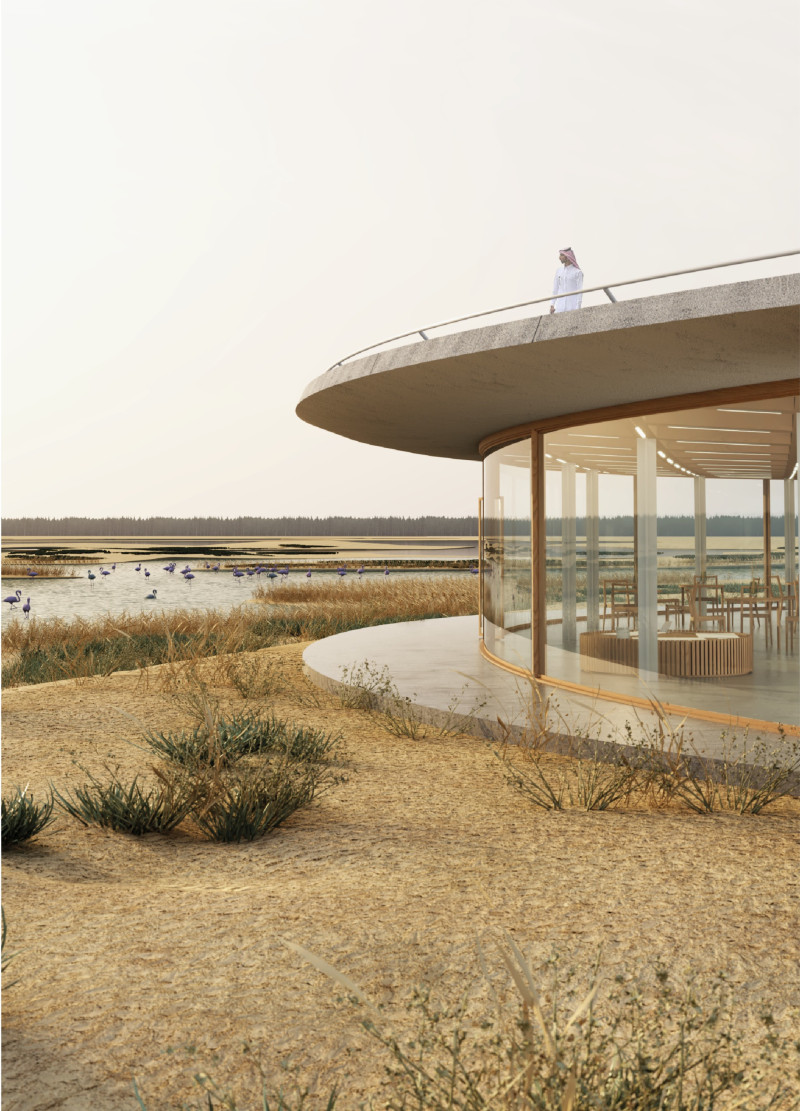5 key facts about this project
The Flamingo Dune project is an architectural design that serves as a visitor center for the Al Wathba Wetland Reserve in the United Arab Emirates. The project is characterized by its innovative approach to connecting the built environment with the natural landscape. Its design reflects the unique topographical features of the reserve, particularly the fossil dunes identified in the region, creating a harmonious relationship between architecture and ecology.
The primary function of the Flamingo Dune is to facilitate educational and recreational activities for visitors while raising awareness about the local wildlife and ecosystem. The layout includes a reception area, exhibition spaces, a café, and adaptable meeting rooms. The building is designed to encourage interaction through its open plan, enhancing the experience of visitors as they engage with their natural surroundings.
Design Approach and Materiality
The design of the Flamingo Dune emphasizes the use of sustainable materials and innovative structural solutions. It employs precast concrete panels for the roofing system, providing durability and weather resistance. Timber framing is extensively used to create a warm, inviting interior, while expansive glass facades offer unobstructed views of the wetlands. Steel columns support the roof’s unique curvature, allowing for an open and airy spatial arrangement.
What sets this project apart from conventional visitor centers is its responsive form that mimics the landscape it occupies. The roof's dynamic contour not only contributes to aesthetic appeal but also facilitates natural ventilation and passive heating. By using wooden louvers, the design emphasizes shading and reduces reliance on mechanical cooling systems.
Functionality and User Experience
The interior design promotes movement and exploration, guiding visitors through the space much like paths found in nature. Key areas within the center include exhibition sections that highlight the local fauna, a café that enhances visitor engagement with the environment, and multi-purpose rooms designed for educational events.
The floating volumes within the structure enhance the overall spatial experience while making efficient use of materials. Accessibility features such as ramps ensure that all visitors can reach the rooftop viewpoints, which provide opportunities to observe the wildlife directly.
For a comprehensive understanding of the architectural details and specifics of the design decisions made, readers are encouraged to explore the project presentation further. Reviewing architectural plans, architectural sections, architectural designs, and architectural ideas will provide deeper insights into how the Flamingo Dune project exemplifies modern architectural thought within a natural context.























































